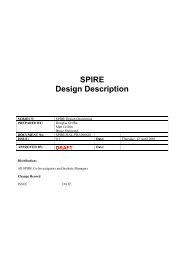gambling in alberta - Research Services - University of Lethbridge
gambling in alberta - Research Services - University of Lethbridge
gambling in alberta - Research Services - University of Lethbridge
You also want an ePaper? Increase the reach of your titles
YUMPU automatically turns print PDFs into web optimized ePapers that Google loves.
Features <strong>of</strong> Problem Gamblers<br />
The types <strong>of</strong> problems most commonly reported by PPGM problem gamblers were exam<strong>in</strong>ed <strong>in</strong><br />
the 2008 and 2009 data sets, 75 and is presented below <strong>in</strong> Table 40. As can be seen, the most<br />
commonly reported problems are mental health and f<strong>in</strong>ancial problems, with social problems,<br />
illegal activity and work/school problems be<strong>in</strong>g less prevalent.<br />
Table 40: Prevalence <strong>of</strong> Different Problems among Problem Gamblers.<br />
2008 2009<br />
N = 242 N = 161<br />
Mental Health Problems 54.4% 50.0%<br />
F<strong>in</strong>ancial Problems 51.0% 51.6%<br />
Relationship/Social Problems 30.2% 24.8%<br />
Neglect <strong>of</strong> Children or Family 12.2% 9.3%<br />
Illegal Activity 7.9% 5.6%<br />
Work or School Problems 5.8% 8.1%<br />
Another important question concerns the types <strong>of</strong> games that have the strongest association<br />
with <strong>gambl<strong>in</strong>g</strong>-related problems. As <strong>in</strong>dicated earlier, it is important to recognize that most<br />
Alberta gamblers do not limit themselves to just one form <strong>of</strong> <strong>gambl<strong>in</strong>g</strong>. In the 2008 Population<br />
Survey, only 34% <strong>of</strong> gamblers just gambled on one form, whereas 25% gambled on 2 forms,<br />
18% on 3, 12% on 4, 6% on 5, 3% on 6, 1% on 7, and 1% on 8 forms. The average number <strong>of</strong><br />
forms gambled on for all gamblers <strong>in</strong> 2008 was 2.4. This patronization <strong>of</strong> multiple forms <strong>of</strong><br />
<strong>gambl<strong>in</strong>g</strong> is especially true <strong>of</strong> problem gamblers. In 2008 only 3.5% <strong>of</strong> PPGM problem gamblers<br />
gambled just on one form, whereas 10.1% gambled on 2 forms, 17.3% on 3 forms, 18.2% on 4<br />
forms, 17.7% on 5 forms, 18.2% on 6 forms, 4.8% on 7 forms, 6.7% on 8 forms, and 3.5% on 9<br />
forms. The average number <strong>of</strong> forms gambled on for problem gamblers was 4.7.<br />
Thus, to some extent, ask<strong>in</strong>g problem gamblers which <strong>gambl<strong>in</strong>g</strong> format contributes most to<br />
their problem is like ask<strong>in</strong>g alcoholics what type <strong>of</strong> alcoholic beverage causes the most<br />
problems (i.e., although there may be preferred alcoholic beverages, all alcoholic beverages<br />
contribute to some extent). 76 Not surpris<strong>in</strong>gly, then, when directly asked if there were<br />
particular types <strong>of</strong> <strong>gambl<strong>in</strong>g</strong> that contributed to their problems more than others, a sizeable<br />
percentage <strong>of</strong> problem gamblers (roughly 44%) said ‘no’ (see Table 41). That be<strong>in</strong>g said, 56% <strong>of</strong><br />
problem gamblers did <strong>in</strong>dicate that certa<strong>in</strong> forms <strong>of</strong> <strong>gambl<strong>in</strong>g</strong> were more contributory, with<br />
EGMs overwhelm<strong>in</strong>gly be<strong>in</strong>g identified as the form that was most responsible (see Table 39).<br />
75 For this analysis the General Population data set was comb<strong>in</strong>ed with the Targeted data set and the Onl<strong>in</strong>e data<br />
set to produce sample sizes <strong>of</strong> 9,532 <strong>in</strong> 2008 and 5,634 <strong>in</strong> 2009 (a total <strong>of</strong> 403 problem gamblers).<br />
76 The analogy to alcoholism is not a perfect one, as while the range <strong>of</strong> alcohol content <strong>in</strong> alcoholic beverages<br />
varies by a factor <strong>of</strong> 10 (e.g., 4% to 40%), the ‘potency’ <strong>of</strong> <strong>gambl<strong>in</strong>g</strong> arguably has a much larger variation. ‘Bet<br />
frequency’ <strong>in</strong> <strong>gambl<strong>in</strong>g</strong> varies from twice a week for lotteries to every 5 seconds for an EGM.<br />
167
















